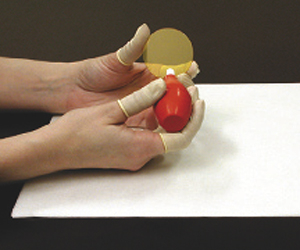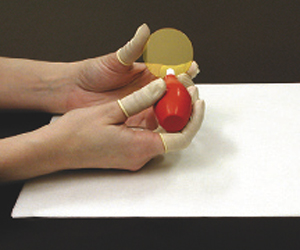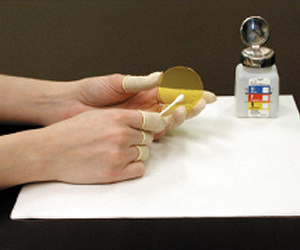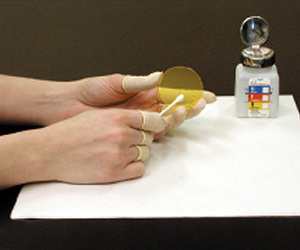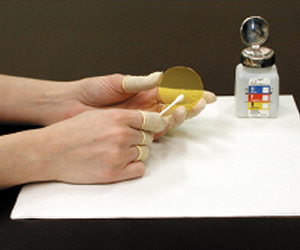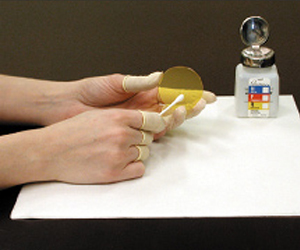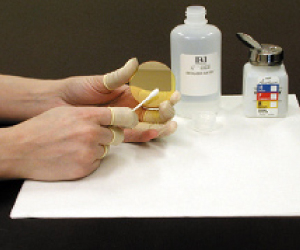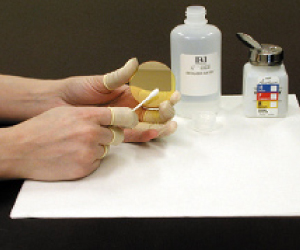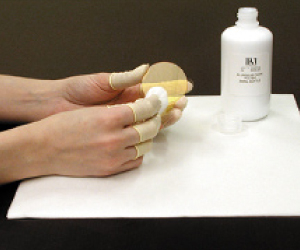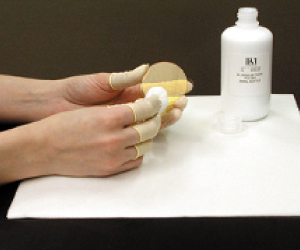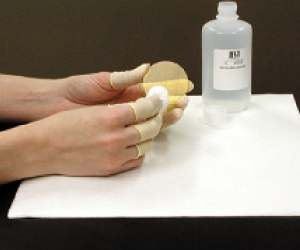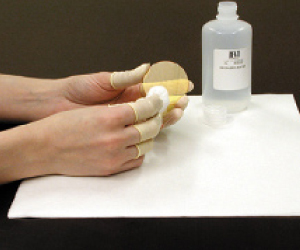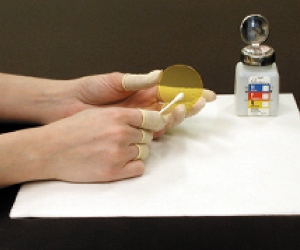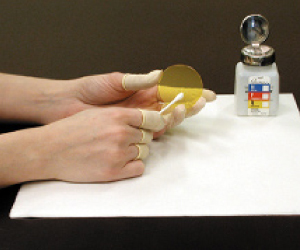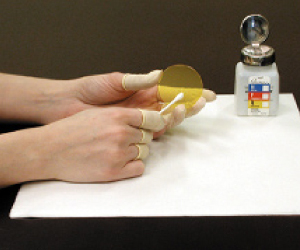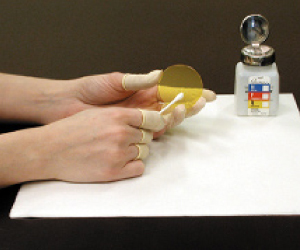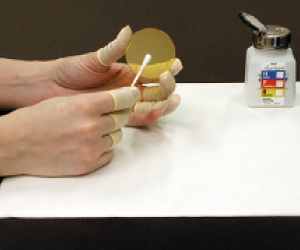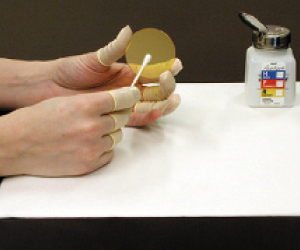Step 4 - Aggressive Cleaning for Severely Contaminated Optics (splatter)
Caution: Step 4 should NEVER be performed on new or unused laser optics. These steps are to be done only on optics that have become severely contaminated from use and have no acceptable results yielded from Steps 2 or 3 as previously noted.
If the thin-film coating is removed, the optic’s performance will be destroyed. A change in apparent color indicates the removal of the thin-film coating.
For severely contaminated and dirty optics, an optical polishing compound may need to be used to remove the absorbing contamination film from the optic.
A.Shake the container of polish thoroughly before opening. Pour four or five drops of polish onto a cotton ball. Gently move the cotton ball in circular patterns across the surface to be cleaned. Do not press down on the cotton ball! Let the cotton ball drag lightly across the surface under its own weight. If too much pressure is applied, the polish will quickly scratch the optic’s surface. Rotate the optic frequently to avoid excessive polishing in any one direction. Clean the optic in this manner for no more than 30 seconds. If, at any time during this step, you notice the optic’s surface change color, stop polishing immediately. This color change indicates that the outer portion of the thin-film coating is being eroded.
(For a mounted optic, a fluffed cotton swab may have to be substituted for the cotton ball if the entire optic’s surface is to be uniformly cleaned. This is especially true with small diameter optics. Be careful not to apply pressure when using a cotton swab!
For a fluffed cotton swab, take the unused cotton swab and rub it back and forth on a soft piece of foam that is free of foreign particles.)
